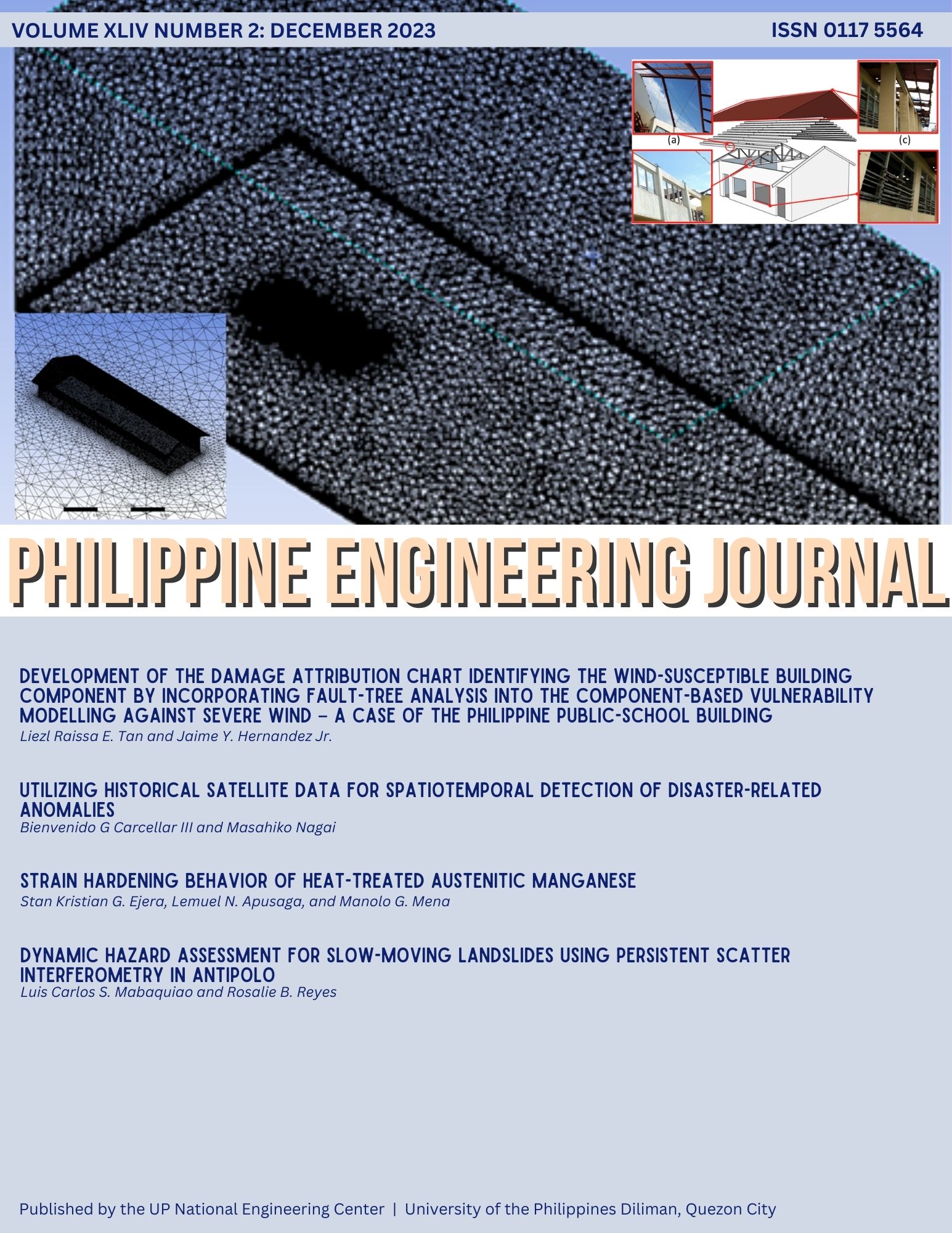Dynamic Hazard Assessment for Slow-Moving Landslides using Persistent Scatter Interferometry in Antipolo
Abstract
Current landslide hazard assessment in the Philippines is done mainly using static base maps . The assessments are provided in the form of static landslide hazard maps. In this research, the technology of satellite interferometry in the form of Persistent Scatter Interferometry (PSI) is utilized in the City of Antipolo, Rizal to supplement the hazard maps by determining Persistent Scattering ground points exhibiting significantly higher velocities than a least-squares defined model. The study successfully detected 184,253 PS points using StaMPS. Assessment of the displacement of each point is done to isolate anomalous patterns by measuring both the actual displacement and the velocity of these PS points. The novelty of the study is the ability for periodic updating of anomalous points that facilitates the updating of landslide hazard maps every 12 days. Furthermore, the results of the study are overlain with published landslide susceptibility map to provide an additional dynamic layer that provides the movement of specific points and their corresponding classification at each image acquisition. The displacement was correlated to a stationary GNSS receiver having a correlation coefficient of 0.83 in the Line-of-Sight (LOS) direction suggesting the viability of the method in determining ground movement in aid of existing landslide hazard maps. Overall, the study demonstrates the feasibility of utilizing PSI in monitoring ground movement to complement conventional landslide hazard assessment in the Philippines.
Keywords: Disaster, Interferometry; StaMPS; SARPROZ; RADAR


